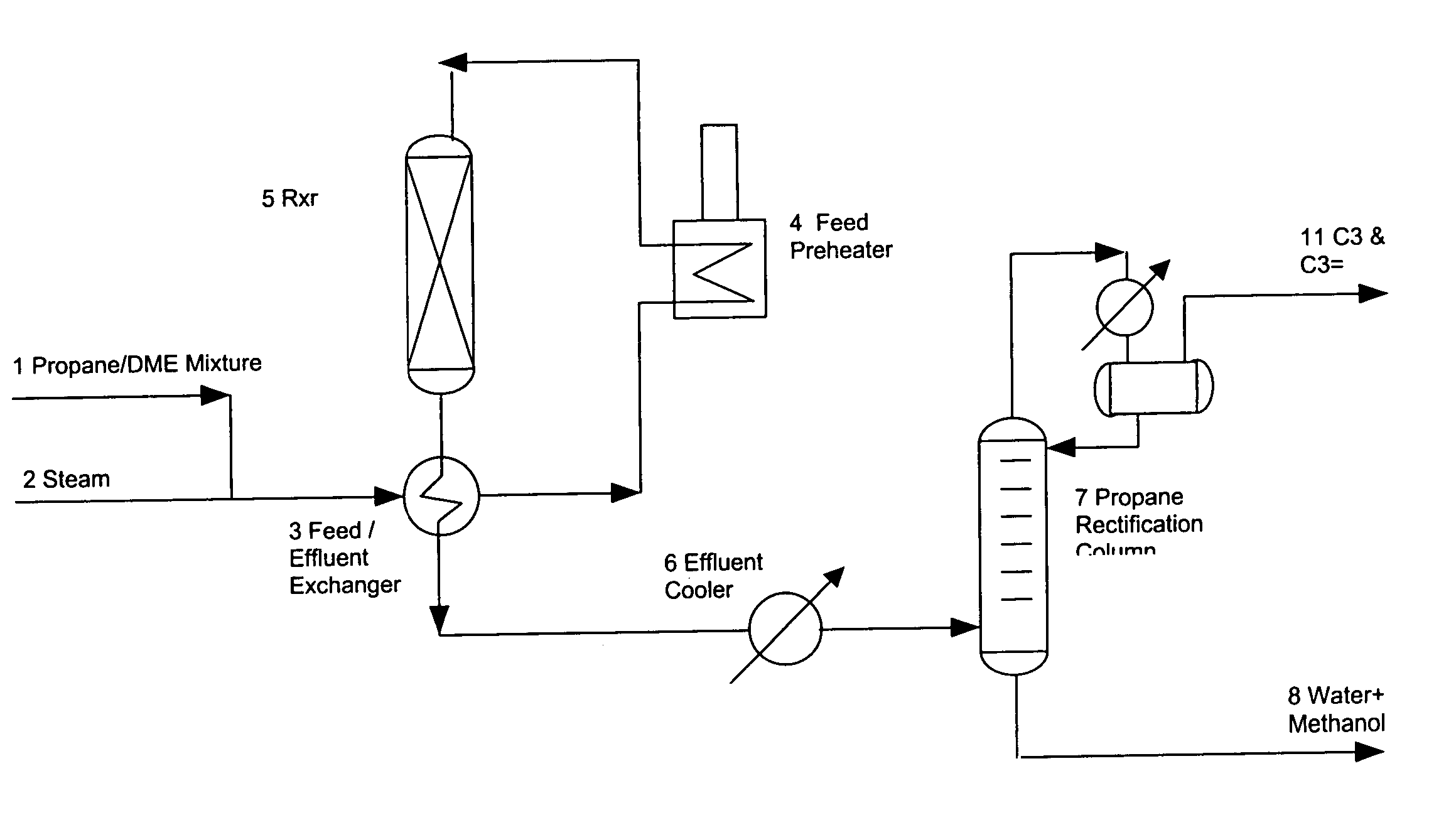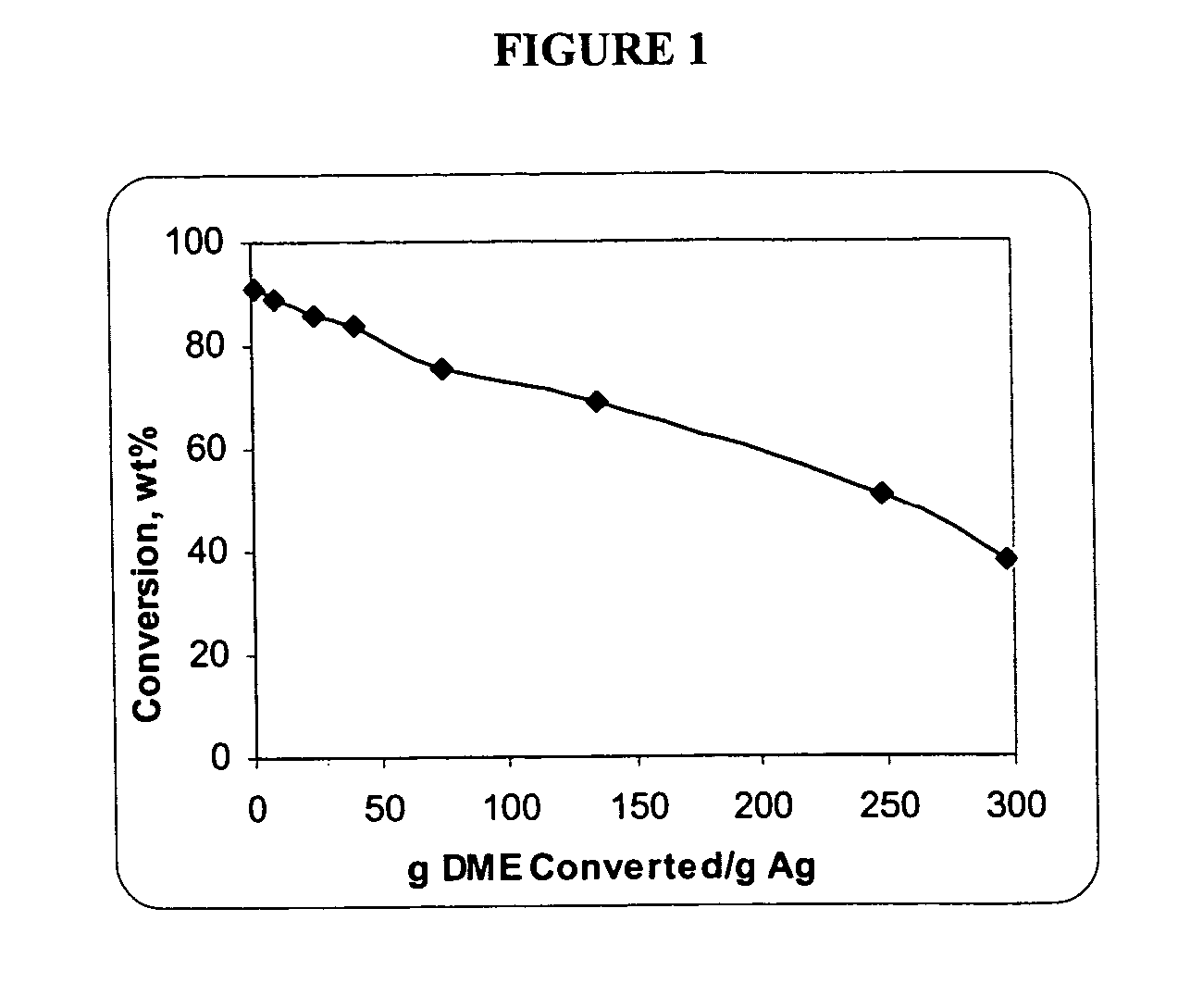Process for removing oxygenates from an olefinic stream
a technology of oxygenates and olefinic streams, which is applied in the direction of hydrocarbons from oxygen organic compounds, chemistry apparatus and processes, and organic chemistry, etc. it can solve the problems of difficult separation of other oxygenates, e.g., dimethyl ether (dme), and limited opportunities to produce low-cost light olefins from petroleum feeds
- Summary
- Abstract
- Description
- Claims
- Application Information
AI Technical Summary
Benefits of technology
Problems solved by technology
Method used
Image
Examples
examples
[0243]Persons of ordinary skill in the art will recognize that many modifications may be made to the present invention without departing from the spirit and scope of the present invention. The embodiments described herein are meant to be illustrative only and should not be taken as limiting the invention, which is defined by the following claims.
examples 1 to 5
Oxygenate Impurity Removal by Catalytic Decomposition
Experimental Details
[0244]Catalyst testing was carried out in a tubular micro flow-reactor at 450° C. Reagents, e.g., DME, olefins or a mixture of both, were introduced into the reactor via pulses. The size of a typical pulse was 500 or 100 microliters (at 21° C. and 1 atm). The reagent pulses were introduced into the reactor via He carrier gas, the flow rate of which was 72 ml / min. The total reactor pressure was kept constant at 25 psig.
[0245]The effluent from the tubular reactor was collected and analyzed by on-line gas chromatography (Hewlett Packard 6890) equipped with both a flame ionization detector and a mass detector. The chromatographic column used was a 150 meter, 0.25 mm (inner diameter) fused silica capillary column (Model No. Petrocol DH 150). Products detectable by FID were quantified. FID-invisible products, such as CO and CO2, were detected by a mass detector. However, no efforts were made to quantify the FID-invis...
example 1
[0247]Fifty mg of the supported silver catalyst were mixed with one g of silicon carbide. The mixture was packed into the tubular reactor and was heated up to 450° C. under He flow. One hundred microliter pulses of dimethyl ether were introduced into the reactor after the reactor temperature stabilized at 450° C. Analysis of the products exiting the reactor revealed the conversion of DME was 95 wt % or greater. The main products were methane, CO and CO2 as qualified by a mass detector.
PUM
| Property | Measurement | Unit |
|---|---|---|
| Temperature | aaaaa | aaaaa |
| Temperature | aaaaa | aaaaa |
| Temperature | aaaaa | aaaaa |
Abstract
Description
Claims
Application Information
 Login to View More
Login to View More - R&D
- Intellectual Property
- Life Sciences
- Materials
- Tech Scout
- Unparalleled Data Quality
- Higher Quality Content
- 60% Fewer Hallucinations
Browse by: Latest US Patents, China's latest patents, Technical Efficacy Thesaurus, Application Domain, Technology Topic, Popular Technical Reports.
© 2025 PatSnap. All rights reserved.Legal|Privacy policy|Modern Slavery Act Transparency Statement|Sitemap|About US| Contact US: help@patsnap.com



